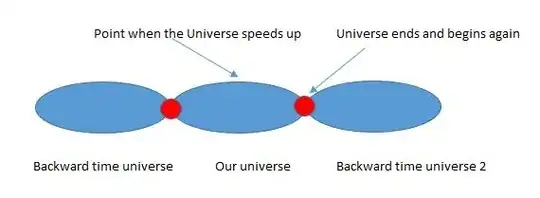Not necessarily.
What I believe they are getting at is a theory that, before the Big Bang, there was a universe that was eternally contracting, and then it collapsed into a singularity and then exploded again to form our universe which now will be eternally expanding.
Hence, the "mirror" universe lies, not in some "parallel dimension" to use a kind of mathematically awkward pop-cult term, but in our past, so if you wanted to "go there", you'd have to go back in time. You'd need a time machine to get into it, since it's more than 13.8 billion years (437 Ps) ago. Unless and until someone invents a flux capacitor and gives it 1.21 jiggawatts (JW) [not to be confused with gigawatts (GW), by the way], or perhaps more even, given this is so far back, that ain't happening :)
Now, what was it like in this "mirror" universe? Well, it would likely have been just like ours but, if you view "ours" and its time as proceeding the same space-time axis, what you would see there would be that everything was running backwards: entropy would be ever-decreasing, not increasing. People would walk backwards, stars would be sucking up light, black holes would expand into stars (meaning they would actually be white holes, formed by collapsing Hawking radiation tuned with impeccable rightness to form a white hole for real and not just in sci-fi), rot gas would turn into corpses and dead people would come back to life and so forth as it all winds back to the Gnab Gib which then becomes the Big Bang - but likely not the same people, aliens and other such things as in our Universe and, for them, they would interpret this as a Big Bang and time going normally because their entropy arrow, which determines the direction of their conscious peception, goes the other way and so to them, "we" "already happened" and "our" Big Bang was their Gnab Gib, and someone there is talking goofily about some version of sroticapac xulf whose purpose is to go, from our perspective, forward in (our sense of, backwards in theirs) time to our world, etc. Two universes "joined at the hip", so to speak.
Or to imagine it more simply: Take a movie - any movie. Take a second movie. Reverse it so it plays backwards. Concatenate the first movie to the end of the reversed version of the second movie. Play this pair of movies connected together which will be joined at their beginnings as one single movie. That is what this is like, only on a universe-wide scale.
